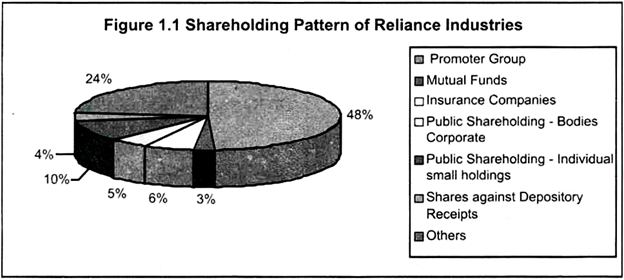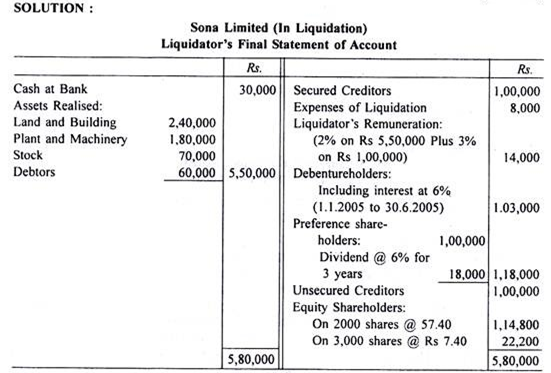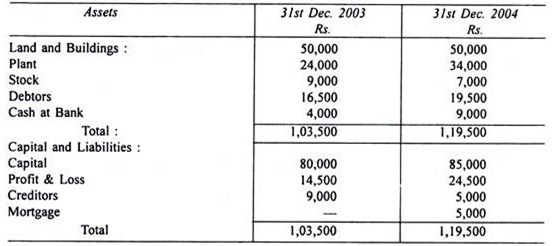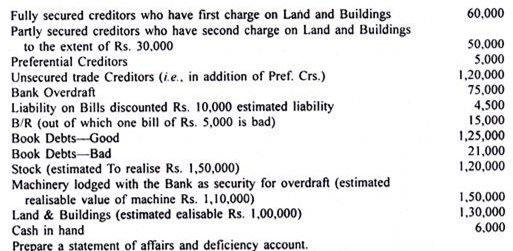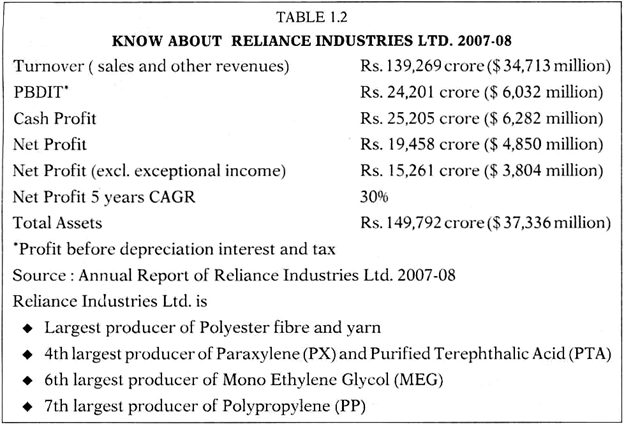Read this essay to learn about:- 1. Introduction to Investment Decisions 2. Accounting Rate of Return on Investment 3. Pay Back Period of Investment 4. Net Present Value Method 5. Present Value Profile of N 6. Adjusted Net Present Value Method.
Essay # 1. Introduction to Investment Decisions:
For the purpose of evaluating an investment proposal, one or more of the different method(s) mentioned in the learning objectives is (are) used. Profit is a traditional parameter which can be used to test whether an investment proposal is to be undertaken.
On the other hand, an alternative and widely used view is that cash flow is the appropriate parameter to evaluate an investment proposal. As you have already learnt the distinction between cash flow and profit, you will appreciate that cash is more objectively measured parameter than profit. In this chapter we shall discuss profit based as well as cash flow based techniques for evaluating an investment proposal.
In an investment proposal initial cash outflows occurred for acquisition, construction or development of various fixed assets like land, building, plant and machinery, furniture and fixtures, etc. and for working capital. Initial cash outflows for acquisition, construction or development of fixed assets are incurred over a period which is termed as “construction period”. Once the fixed assets are ready for use, working capital is also employed and the project is put to use.
ADVERTISEMENTS:
While in operation, the project generates the cash inflows/profit and also there will be cash outflows for maintenance of the fixed assets. Such subsequent cash outflows incurred for maintenance of fixed assets are part of operating expenses/ outflows. In accounting measures depreciation on fixed assets is treated as an item of expense while in cash flow measure depreciation is a noncash item reflecting only notional recovery of historical cost of depreciable fixed assets.
In Cash flow methods, timing of cash flow is very important. In an investment proposal timing of various cash inflows and outflows are evaluated using appropriate discount factor. This discount factor should be the WACC of the project. It is also possible to discount the cash flow using a required rate of return higher than WACC.
Let us first understand the distinction between profit and cash flow which will be helpful for building a sound conceptual base on investment evaluation techniques.
ADVERTISEMENTS:
Illustration 1:
Ramjos Ltd., a newly established company wants to establish a chemical factory.
The accountant of the company has estimated the initial cash outflows as given below:
Land Rs.20 million, Building Rs.100 million, Plant and Machinery Rs.1000 million.
ADVERTISEMENTS:
Expected life of the building is 10 years and that of plant and machinery is 5 years. Resale value of the building after 5 years is Rs.75 million and that of plant and machinery is Rs.100 million. The company will follow straight line method of depreciation. For income-tax purpose depreciation is to be calculated using written down value method. Rate of depreciation for building is 5% and that of plant and machinery is 25%. Assume that any un-depreciated value of machinery and building after adjustment of scarp value/resale value will be entitled to get tax benefit at the end of useful life of the fixed assets at the full rate of tax. Full rate of corporate tax is 35% plus surcharge 5%.
The accountant has projected sales on the basis of market forecast which is more or less stable over the life of the project and estimated at Rs.2000 million, and cash expenses are estimated at Rs.800 million.
The company has decided to finance the project using equity share capital. Unlevered beta of similar company is 0.6. You may use 14% market return and 6% risk free rate for determining cost of equity.
Find out PAT and cash flow arising out of this investment proposal. Also prepare projected balance sheets of the investment proposal.
ADVERTISEMENTS:
Solution:
Projected Profit and Loss Accounts and Cash Flow Statements:
Note 1: Accounting Depreciation:
Building = (Rs. 100 million – Rs. 75 million)/5
Plant & machinery = (Rs. 100 million – Rs. 100 million)/5
Note 2: Tax Deprecation:
Note 3: Deferred Tax Provision:
As per AS -22 deferred tax liability/asset should be created on the basis of timing difference. One important source of timing difference is difference between accounting and tax depreciation.
ADVERTISEMENTS:
Note 4: Provisions for Current tax:
1. Reserves & Surplus = Cumulative PAT
2. Cash & Bank balance = Cumulative operating cash flow
3. Deferred Tax Liability = Cumulative deferred tax provision
Essay # 2. Accounting Rate of Return on Investment:
Return on Capital Employed (ROCE) and Return on Equity (ROE) are two popular capital based performance ratios which can be used for evaluating investment proposal as well.
Return on capital employed is used as a evaluating parameter for a levered company. Return on equity is suitable for unlevered company. Equity (Equity Share Capital plus Reserves and Surplus) has grown over the life of the project. It may be reasonably presumed that the intermediate cash flow is reinvested by the company. This re-investment would also generate additional cash flow after payment of tax. Therefore, what should be the ROE?
Illustration 2:
Reconsider the projected profit and loss account, cash flow and balance sheets of Ramjos Ltd. Assume that intermediate cash flow is re-invested @ 10% p.a. Revise the Profit and Loss Accounts, Cash Flow, and Balance Sheets. What is average ROE? How would you evaluate the average ROE?
The company has decided to finance the project using equity share capital., Unlevered beta of similar company is 0.6. You may use 14% market return and 6% risk free rate for determining cost of equity.
Solution:
Projected Profit and Loss Accounts and Cash Flow Statements:
Note 1: Accounting Depreciation:
Building = (Rs. 100 million – Rs. 75 million)/5
Plant & Machinery = (Rs. 100 million – Rs. 100 million)/5
Note 2: Tax Depreciation:
Note 3: Deferred Tax Provision:
As per As-22 deferred tax liability/asset should be created on the basis of timings differences. One importance sources of timing differences between accounting and tax deprecation.
Note 4: Provision for Currents tax:
Computation of ROE:
Average ROE is compared with WACC. The project should be accepted ROE > WACC.
WACC = 6% + (14%- 6%) × 0.60 = 10.80%. So the project should be accepted.
Essay # 3. Pay Back Period of Investment:
Payback period signifies time required to recover the investment in a project. This can be indicated either in terms of discounted cash flow or in absolute terms.
This is very important information to the investor as this will help to assess the opportunity lost. Suppose, an investor gets locked in a long payback period, meanwhile he may lose other investment opportunities.
How to compute payback period?
Step 1:
Find out cash flow of the project including initial cash outflows.
Step 2:
Find out cumulative cash flows.
Step 3:
Check the year in which cumulative cash flow has reached minimum negative.
Step 4:
Find the difference between zero and minimum negative cash flow.
Step 5:
Find out the cash flow of the immediately succeeding year.
Step 6:
Illustration 3:
Find out Pay Back Period on the basis of cash flow derived.
Step 3:
Minimum negative cumulative cash flow will be reached in Year 1
Step 4:
Cash Flow in the immediately succeeding year Rs.883.59 million.
This gives an impressive situation that cash outflow by way of investment can be recovered within a period of little over one year.
Payback period method is criticized on two grounds:
(i) Under this method cash flows occurred after the payback period are not taken into consideration, and
(ii) Time value of money is ignored in this method.
However, time value of money can be very easily accommodated within the framework of payback period. Instead of using the absolute amount of cash flow, it is possible to use discounted value of cash flows for determining the payback period. In case discounted value is used, the payback period is termed as Discounted Pay Back Period
Illustration 4:
Using Cash flow data, find out discounted payback period. The project is equity financed and cost of equity has been worked out to be 10.8%.
Solution:
Illustration 5:
For an investment proposal the following cash flows have been planned:
Find out accounting rate of return and payback period. Initial investment is proposed to be financed 50% through 10% Loan and 50% through equity share capital. Average tax rate is 30%. Assume beta 1.1, market return 14% and risk free rate 6%. Comment on the acceptability of the project.
Solution:
Determination of Accounting Rate of Return and WACC:
(Figures are in Rs. million except for ROE, Cost of equity, cost of debt and WACC which are in %)
Computational Notes:
Column 2 = PAT + Depreciation + Interest, Interest is considered while computing WACC.
Column 3 = Original Equity + Cumulative PAT
Column 4 = ROE % = PAT/Equity %
Column 6 = 10% × (1-.3)
Column 7 = 6% + (1496 -6%) × 1.1
Column 8 = Column 3 + Column 5
Column 9 = Cost of Debt × (Debt/Total Capital) + Cost of Equity × (Equity/Total Capital)
Average ROE % 18.64 > Average WACC 13%, so the project is acceptable. Generally equity changes because of ploughing back of profit to the business. Therefore, weight of debt and equity will be changing and the WACC will be changing as a result thereof. Of course, as the company is becoming more equity financed, its cost of equity should come down. But in this Illustration it has been kept constant.
Determination of Pay Back Period:
Note:
Cash flows are discounted applying different discount factor as per WACC of the period.
Pay Back Period = 2 + 20/90 = 2.22 years
Discounted Pay Back Period = 2 + 48.52/62.93 = 2.77 years.
Comment:
It appears that payback period is less than the half of the life of the project and discounted payback period is little over the half of the life of the project. Also its average ROE is higher than average WACC. The project seems to be attractive.
Essay # 3. Net Present Value Method:
Net of present value of initial cash outflows for an investment and subsequent cash flows.
To apply this method follow the steps mentioned below:
a) Find out cash flow of the investment proposal – Both cash outflow as well cash inflow from the investments;
b) Discount the cash flow applying WACC.
c) Discounted cash flow is termed as net present value (NPV)
d) Check whether NPV > 0, if so accept the project.
e) If NPV < 0, reject the project.
Illustration 6:
Find out Net Present Value of the project. Should the project be accepted?
Solution:
Determination of Net Present Value:
NPV ≥ 0, so the project is acceptable.
Illustration 7:
Using the data given in comment on the acceptability of the project. It has been assumed that intermediate cash flows are not re-invested.
Solution:
The project should be accepted.
Illustration 8:
X Ltd. is considering an investment proposal. The proposal involves initial cash outlay of Rs.200 million. The effective life of the project is 5 years. Sales in the first year is expected to be Rs.150 million, variable cost 40% and fixed cost (other than depreciation) is expected to be Rs.20 million.
Sales are expected to grow @ 5% during second through fifth year. The project is planned to be debt financed @ 10% p.a. Corporate tax rate including surcharge is 36.75%. Accounting depreciation is Rs 40 million p.a. For income tax purpose 25% WDV depreciation is to be charged. Should the project be accepted?
Solution:
(1) Profit Analysis:
Notes on Computation of tax depreciation, deferred tax provision and current tax
(2) Cash Flow Analysis:
Note:
Discount factor used in the cash flow analysis is taken as cost of debt as the project is entirely debt financed. Project should be evaluated using marginal cost of capital.
As this project is having positive NPV, it may be accepted.
Comparing two projects:
Often a company evaluates many projects among which it selects the best one for investment.
While comparing two projects decision criteria is:
NPV1 > NPV2
Accept the project which has better net present value.
Illustration 9:
Given below are the cash flows of two projects. Which project would you recommend? WACC = 12%
Solution:
Project B is better than Project A.
Profitability Index:
This is given by –
Profitability Index is used for comparing two projects with dissimilar investment. This index shows present value of cash inflow per rupee of investment. If two projects are of different size, NPVs are not comparable as the project of bigger size is expected to have higher NPV. So there is a need for a relative measure of NPV. Profitability Index fills up that gap.
Illustration 10:
Find out NPV and Profitability Index of the following two projects.
WACC =12%.
Solution:
Observation:
In case the company prefers to investment in Project 3 it will earn higher amount NPV, but investment in Project A will yield higher rate of NPV. If the company does not have any other project in hand to earn Profitability Index > 1.06 then surplus investible fund will remain idle or will have to be re-invested at a lower return. Therefore, profitability index method should be applied after analyzing the alternative full deployment of available investible fund.
Essay # 4. Internal Rate of Return on Investment:
Internal rate of return on investment is what equates present value of cash inflow with the present value of cash outflow.
Cn = Cash flow of period n, r = internal rate of return.
How to solve this equation?
Trial and Error Method -Find out r at which present value of cash inflows is equal to present value of cash outflows.
Illustration 11:
On the basis of the following cash flows find out IRR applying trial and error method.
Solution:
In trial and error method, we should try with a rate that may make the present value of cash inflows close to Rs.200 million.
Try with 15% and 16%:
1. At 15% Present Value of Cash Inflow is Rs.1.13 million more than present value of cash outflow.
2. At 16% Present Value of Cash Inflow is Rs.3.54 million less than present value of cash outflow.
3. Therefore, IRR lies between 15% and 16%.
4. Now apply linear interpolation to find out IRR.
You may also use excel function. Go to Insert → Function → Financial → IRR
Command:
IRR (Cell reference)
= IRR (B2:B7) = 15.24%
IRR Decision Criteria:
IRR > WACC, Accept
IRR < WACC, Reject
Illustration 12:
Should Project A discussed in Illustration 1 be accepted if WACC is 12%.
Solution:
(IRR = 15.24%) > (WACC =12%), so this project should be accepted.
Shortcoming of the IRR method: It assumes that intermediate cash flows are re-invested at IRR which may not be true. To overcome this shortcoming, it is possible to apply modified IRR.
Essay # 5. Present Value Profile of NPV:
Present value profile is graphical presentation of NPV at different discount rates. At discount rate = 0, NPV is the highest. Higher the discount factor, lower is the NPV. At IRR, NPV becomes zero, and thereafter it becomes negative. It is very useful in project evaluation, as this presents NPV for alternative WACCs.
Illustration 13:
On the basis of the following cash flow, draw present value profile of Project A and Project B in the range of 0%-25% discount rates. Find out from the Present Value Profiles, which of the projects is having higher IRR?
Solution:
NPVs of the projects at different discount rates are plotted in Figure 15.1. You may observe that present value profiles of Project A and Project B intersect each other. The rate at which two present value profiles intersect each other is termed as “cross over rate”. At this rate both the project is equally acceptable.
The discount rate at which each present value profiles intersect the X – axis is termed as Internal Rate of Return. From Figure 15.1, you may observe that IRRB < 15% and IRRA >15%, Le. IRRA > IRRB. To be precise IRRA = 13.70%, IRR = 15.24%.
Illustration 14:
On the basis of the data given in Illustration 1 and present value profiles of Project A and Project B, recommend a project for investment applying IRR method and as per NPV method.
Solution:
As IRRA > IRRB Project A is acceptable as per IRR method. But there is no unique choice as per NPV method as the projects are having interesting Present Value Profiles. Let the cross over point be C.
At C, both the projects are acceptable.
For PV profiles to the left of C, Project B is acceptable.
For PV profiles to the right of C, Project A is acceptable.
Therefore, identification of cross rate is very important to identify C.
Illustration 15:
As you have seen in Illustration 2 that identification of cross over rate C is very important for decision making. Find out cross over rate and on the basis of it clarify the decision criteria as per NPV methods.
Equating Eq (1) and Eq (2):
In other words, cross over rate is the IRR of differential cash flow of the two projects:
Cross over rate = 9.33%.
Interpretation of cross over rate:
Essay # 6. Adjusted Net Present Value Method:
Under this approach it is assumed at the first instance that the firm is unlevered and accordingly, cash flow is discounted applying unlevered cost of equity derived using unlevered beta. Take the net present value derived as unlevered value of the project. Take it as NPVU. To take care of the leverage component, tax saving on interest is discounted applying cost of debt. Thus net present value of leverage is derived.
Take it as:
NPVL
Adjusted Net Present Value of the project = NPVU + NPVL
Illustration 16:
On the basis of the following cash flow information of Project A, find out NPV and adjusted NPV. The project is financed using Rs.100 million debt and Rs.100 million 10% debt. Tax rate is 30%. Market return 15%, risk free rate 6%, levered beta = 1.
Solution:
Kd = 10% × (1 – 0.3) = 7%
K = 6% + (15% – 6%) × 1 = 15%,
WACC = 7% × 100/200 + 15% × 100/200 = 10.5%
Unlevered beta = βU = βL[1 + (1 – T) × D/E] = 1/[1 + .7 × 1] = 1/1.7 = 0.59
Unlevered cost of Equity: 6% + (15% – 6%) × 0.59 = 11.29%
Often the project cash flow is over-discounted applying high WACC. Adjusted NPV method explains the unlevered value of the project and value of tax saving which the direct result of the adding financial leverage in project is financing.








